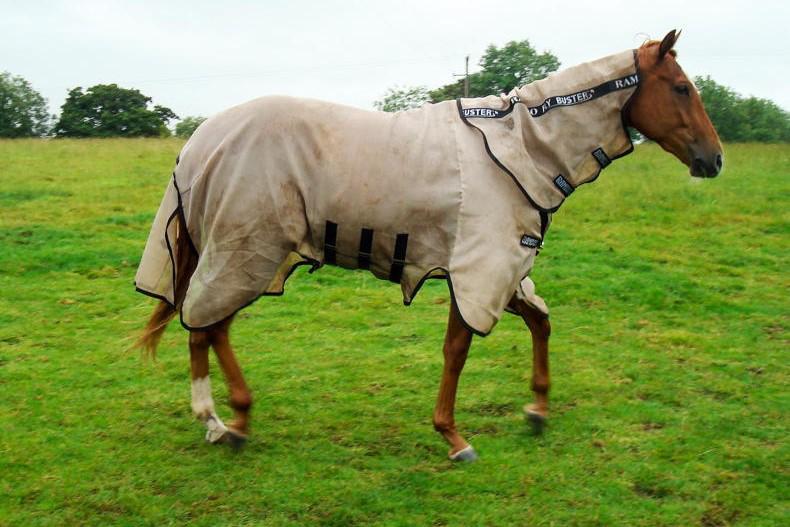It is very common for equines to suffer from allergic skin problems during the summer months.
Symptoms can usually can be noticeable as early as spring when horses get turned out. There are many types of allergic skin reactions but insect bites from the midge cullicoides cause the biggest problem known as sweet itch. Signs of sweet itch normally reduce during the winter months.
Saliva from the midge bite is the cause of a type one hypersensitivity reaction.
Symptoms
Mild to very aggressive itching.Scratching.Rubbing of the tail, mane and back.Hair loss in these areas.Areas of painful broken skin with secondary skin infections.Thickened skin when the problem has existed without management.Miserable debilitation during the spring and summer months.Change in personality of your horse as a result of the intense discomfort.Treatment
Stable your horse during peak biting hours
Midges are most active at dusk and dawn, so bring your horse into a stable during those hours. For additional protection, fly screens and fans in stables are also advantageous.
Keep your horse covered
One way to reduce bites is to keep a fly sheet on your horse during the summer months. These full body rugs are suitable for summer conditions. These sheets and rugs can cover the belly, neck and head of the horse.
Use fly-control products
Fly repellents such as deosect (cypermethrin) can offer protection. This is an effective but relatively severe product and it is advised to do a patch test before using it all over your horse. It can last for 14 days but cannot be used on broken skin.
Other fly sprays can be bought from equine supply stores and can work well but should be applied regularly. Just like sunscreen these sprays often do not last all day. Oils such as citronella oil also provide a barrier that midges do not like to bite through.
Restrict your horse’s access to marshy areas
Midges breed in marshy, shady ground with rotting vegetation. If possible, move your horse to a field in a drier, more exposed location away from boggy terrain.
It is very common for equines to suffer from allergic skin problems during the summer months.
Symptoms can usually can be noticeable as early as spring when horses get turned out. There are many types of allergic skin reactions but insect bites from the midge cullicoides cause the biggest problem known as sweet itch. Signs of sweet itch normally reduce during the winter months.
Saliva from the midge bite is the cause of a type one hypersensitivity reaction.
Symptoms
Mild to very aggressive itching.Scratching.Rubbing of the tail, mane and back.Hair loss in these areas.Areas of painful broken skin with secondary skin infections.Thickened skin when the problem has existed without management.Miserable debilitation during the spring and summer months.Change in personality of your horse as a result of the intense discomfort.Treatment
Stable your horse during peak biting hours
Midges are most active at dusk and dawn, so bring your horse into a stable during those hours. For additional protection, fly screens and fans in stables are also advantageous.
Keep your horse covered
One way to reduce bites is to keep a fly sheet on your horse during the summer months. These full body rugs are suitable for summer conditions. These sheets and rugs can cover the belly, neck and head of the horse.
Use fly-control products
Fly repellents such as deosect (cypermethrin) can offer protection. This is an effective but relatively severe product and it is advised to do a patch test before using it all over your horse. It can last for 14 days but cannot be used on broken skin.
Other fly sprays can be bought from equine supply stores and can work well but should be applied regularly. Just like sunscreen these sprays often do not last all day. Oils such as citronella oil also provide a barrier that midges do not like to bite through.
Restrict your horse’s access to marshy areas
Midges breed in marshy, shady ground with rotting vegetation. If possible, move your horse to a field in a drier, more exposed location away from boggy terrain.






SHARING OPTIONS